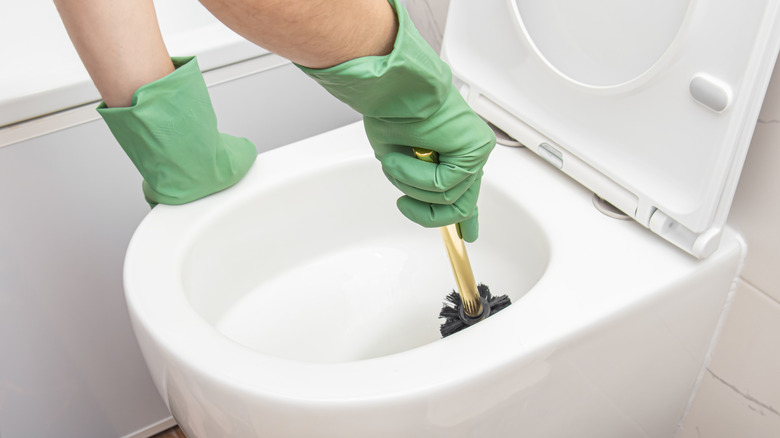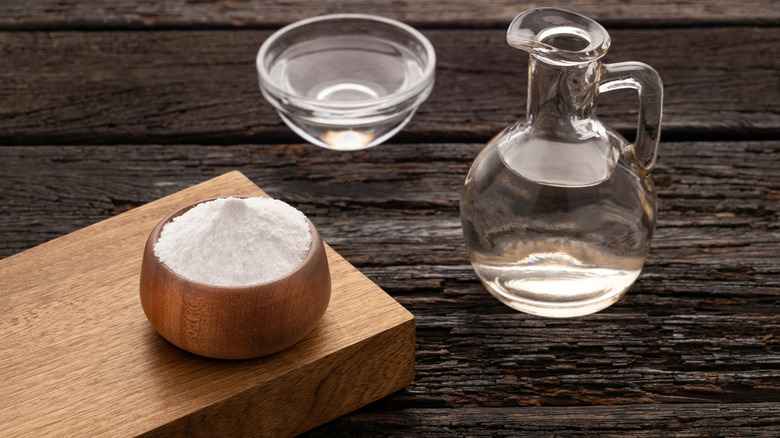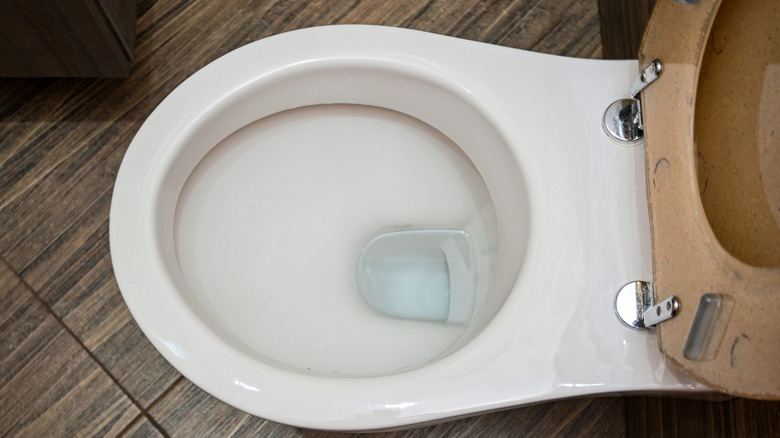The Easiest Way To Remove Toilet Rust And Prevent Future Stains
We may receive a commission on purchases made from links.
Rust stains in the toilet are like the annoying neighbor who pops up completely uninvited and stays way too long. These unsightly stains can give off the impression that your bathroom is unkept, and even worse, they can create a feeding spot for iron-loving bacteria and other organisms. Bathrooms receive a lot of daily traffic, often requiring at least a somewhat consistent cleaning schedule to keep them from looking like the aftermath of a tornado. But no matter how many times you deep clean your bathroom and scrub your toilet bowl, it seems like these stains just won't go away. Perhaps you're using the wrong methods or cleaning products. Experts recommend using a mixture of either baking soda (such as Clabber Girl baking soda) and vinegar, or lemon juice and borax (such as Harris borax) to remove stubborn rust stains from toilet bowls, while regular cleaning can prevent stains.
These stains can appear due to a variety of reasons. One of the most common reasons is simply hard water or just poor water quality, such as that with high iron levels. When iron in the water oxidizes, it forms rust stains, which result in the orange rings you see inside the bowl on the water line. Some discolorations can also be the result of deposit formations due to magnesium or calcium-heavy water sticking to the sides of the bowl. If these deposits aren't routinely scrubbed away they'll grow larger and become more visible over time. Luckily, with this simple toilet cleaning hack, you can remove these bothersome stains. Even better, you'll be using everyday cleaning products and spending less than $20 to do it.
Get rid of toilet rust stains using baking soda and vinegar
Before cleaning your toilet, it's always best to gather your cleaning supplies. For this task, you'll need cleaning gloves and a Shaw's Pads toilet scrubber in addition to baking soda and vinegar. Start by pouring about a cup of baking soda into the toilet bowl. Next, add a cup of vinegar and let the two ingredients sit in the toilet for about 30 to 45 minutes. After this, don your cleaning gloves, grab your scrubber, and go over the stains until they disappear. Afterward, flush the toilet and check for any remaining stains.
In cases of heavy stains, you may need to let the ingredients sit longer or repeat the steps for complete removal. Vinegar can be pretty overpowering, so opening a window for ventilation may be helpful. Also, never add bleach to this vinegar solution as it can lead to toxic fumes and cause safety hazards.
Removing toilet rust stains using lemon juice and borax and tips for prevention
For this task, it's best to begin with an empty toilet bowl. To start, use a disposable cup to remove any standing water from the bowl. Then, mix equal parts borax and lemon juice in a bowl to create a paste. Next, take a sponge, a popsicle stick, or another disposable application tool and apply the paste directly to the rust stains. Let the paste sit for two to four hours or longer if necessary (at least 30 minutes is recommended). Afterward, dampen your toilet scrubber with water to soften the paste if it's hardened, and scrub away the rust stains. Repeat these steps for stubborn stains if needed.
There are a few ways you can prevent rust buildup in your toilet bowl. One of the most obvious ways is to simply keep your toilet clean. This means cleaning it weekly with either an all-natural cleaning solution, such as baking soda and vinegar, or using store-bought cleaners, such as Comet or Lysol Toilet Bowl Cleaner.
You can also add a water softener system to your home to help mitigate this issue. These systems effectively remove a variety of common rust-causing minerals often found in water, making it easier on your plumbing and water appliances. Note that this solution will be more expensive, with these systems ranging anywhere from $800 to over $2,000 in addition to installation costs.


